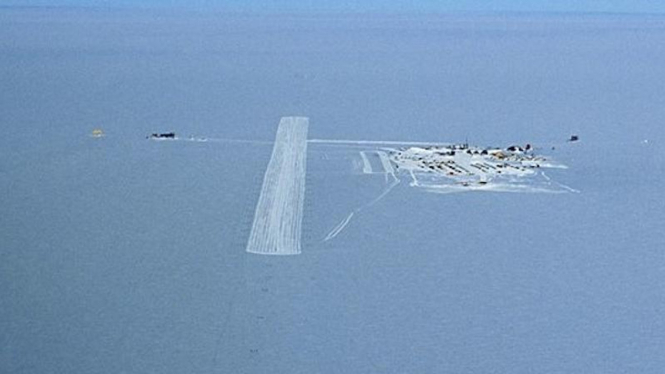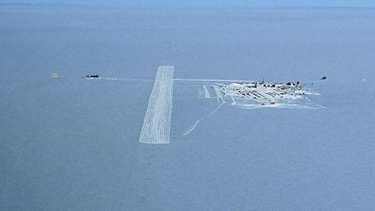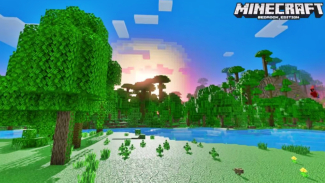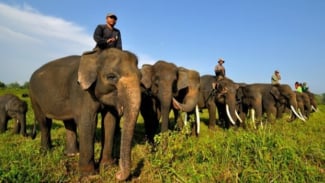- Mirror
VIVA – The fact about the coldest continent on Earth, we often hear about the north polar region it because the north polar region is a popular area. But it turns at the south polar, Antarctica. Antarctica is the most remote continent and is rarely touched by humans.
Antarctica is only used as a natural laboratory for studying about earth and atmosphere. Actually, Antarctica is a continent with beautiful landscapes but not friendly for humans to live in. This continent is the coldest place on Earth.
Here are ten wonderful facts about the coldest continent on earth:
1. Freshwater Continent
The existence of freshwater on the Antarctic continent is the largest in the world . In the creation of Gillissen (1991) entitled "An Environmental History of Two Freshwater Lakes in the Larsemann Hill, Antarctica '', Gillisen explains that 70 percent of the world's freshwater is locked in layers on the vast ice continent of Antarctica. Antarctica.
Villa Las Estrellas, Antartika
- Wikimedia
The Antarctic ice is the largest on Earth, covering 14 million square kilometers, covering the valleys and all of its highlands. Only 1 percent of the continent of Antarctica is permanently free of ice.
The thickness of the ice on the Antarctic continent is 4.5 kilometers or equivalent to half the height of Mount Everest. If all that ice melted, global sea levels would rise as high as 60 meters.
2. Desert Continent
Desert is defined as an area that has little annual rainfall. The article by F.J Wentz, et al (2007) with the title "How Much More Rain Will Global Warming Bring", states that the continent of Antarctica which is at the South Pole only has an annual rain of 10 mm.
Although Antarctica has always been covered by ice, it took 45 million years to grow to its current thickness, due to the lack of rainfall there. Apart from being the driest continent on Earth, Antarctica is the coldest, windiest, and highest place on earth.
3. Antarctica also Warm
According to previously mentioned sources, the coldest temperature ever recorded on the continent of Antarctica was -89 °C. It's hard to imagine Antarctica as a warm heaven with a middle temperate weather.
But Antarctica hasn't always been a land locked in by a massive ice sheet. In fact, Antarctica was once on the verge of warming. Researchers estimate that 40-50 million years ago, temperatures in Antarctica reached up to 17°C. Scientists have also found fossils showing that Antarctica was once covered with green forests and inhabited by dinosaurs!
4. Antarctic Peninsula, a Place that Gets Hot Easily
The Antarctic Peninsula heats up more easily than any other region on Earth. The Antarctic Peninsula is one of the fastest-warming regions on Earth.
The average temperature on the Antarctic peninsula has increased by 3°C , five times the average increase on Earth. This causes some changes, for example where and when penguins form colonies and sea ice forms. This also means that the fertile moss on the Antarctic Peninsula can grow a little longer.
5. A Continent that Has No Time Zone
Most of Antarctica experiences 6 months of constant daylight in summer and 6 months of darkness in winter. The start time feels a little different with no markers for day and night.
Generally, scientists who work in Antarctica live in the time zone of their home country, but this can cause some problems.
For example, on the Antarctic Peninsula you can find stations from Chile, China, Russia, the UK and many other countries. To imagine that if all stations of this country remained in their original time zones, it would be confusing when they tried to share data.
6. The Direction of the Road Always North
Standing at the South Pole is certainly the southernmost point on Earth. This means that in every direction facing a person standing in Antarctica, that direction is north.
But is there a region of the Antarctic Peninsula referred to as West Antarctica, and East Antarctica? It is based on the prime meridian, an imaginary line that passes through Greenwich in England at 0 degrees longitude. If you were standing at the South Pole and facing Greenwich, everything on the left would be west Antarctica and everything on the right would be east Antarctica.
7. It Has an Active Volcano
Antarctica is home to several volcanoes and two of them are active. Mount Erebus, the second highest volcano in Antarctica, is the southernmost active volcano on Earth. Mysterious pyramids in Antarctica.
The second active volcano is on Deception Island, an area that has a volcanic caldera located in the South Shetland Islands. It was originally a whaling site, but was abandoned after it erupted in 1969.
8. There is a Red Lake
In 1911 at a glacier in East Antarctica, a strange phenomenon appeared. Taylor glacier displays a deep red color and there is water flowing from within the glacier. For many years, the source of the red color has remained a mystery. Bloody snow in Antarctica.
In 2017, scientists announced that they had found the cause. The water that flows from inside the glacier comes from a subglacial lake that is high in salt and oxidized iron, and when the elemental iron comes in contact with oxygen, it produces a red color to the water, and now the glacier filled with water is called Blood Fall.
9. Continent Together
Antarctica was first discovered in 1820, then several countries quickly claimed the continent of Antarctica, this caused death. While some countries argue that Antarctica is their right, others strongly disagree.
In December 1959, 12 countries signed the Antarctica Agreement, an unprecedented international agreement to govern the continent. Until 41 other countries have enjoyed the agreement.
10. Diamonds Dust in the Sky Continent
Diamond dust is made up of tiny ice crystals that settle from the moist air near the earth's surface. Looks like ice fog.
As the ice crystals hang in the air, they come into contact with a small amount of sunlight causing them to sparkle, creating a sparkling effect that looks like thousands of floating diamonds. This diamond dust is a beautiful optical phenomenon.





















